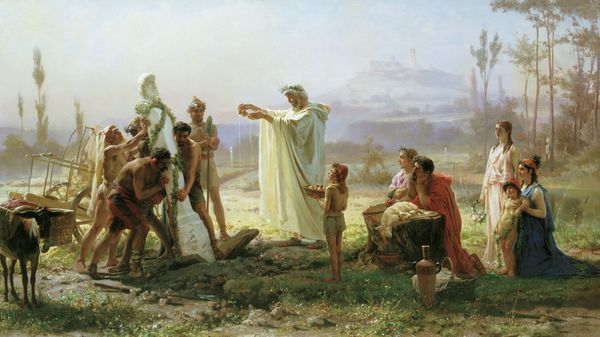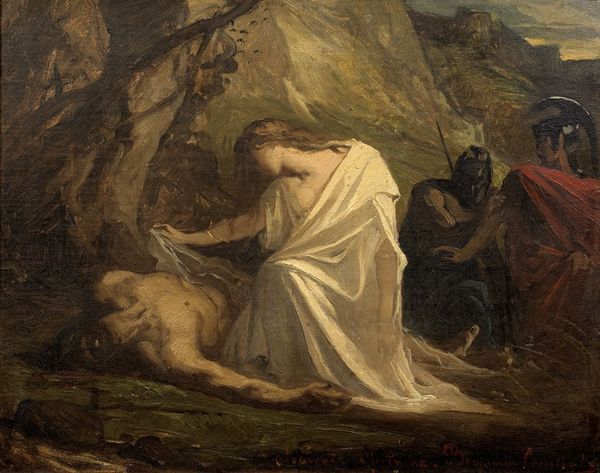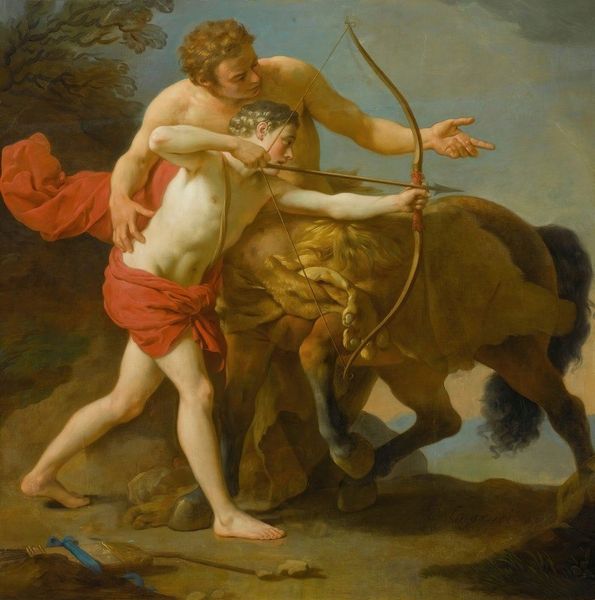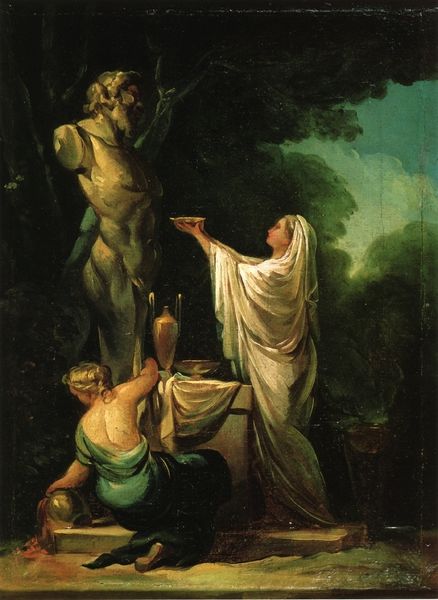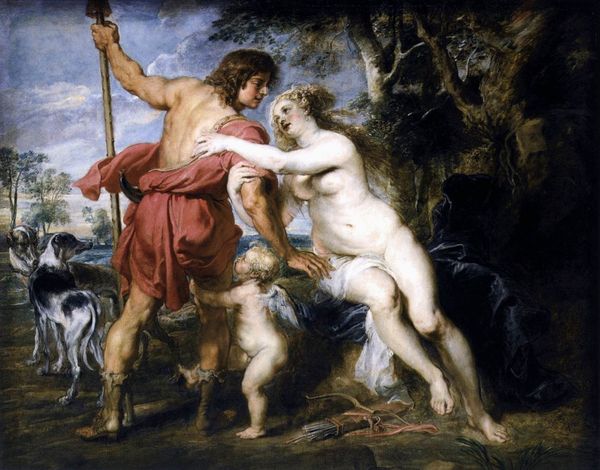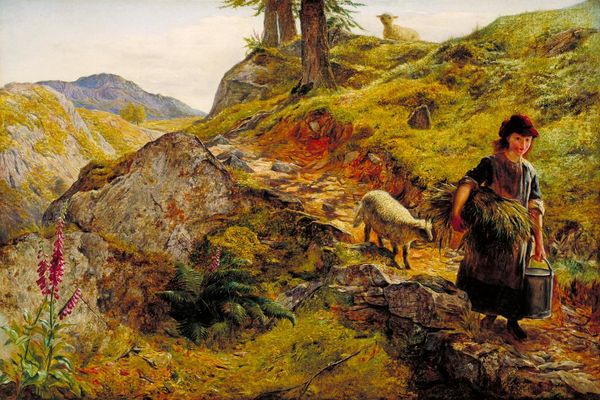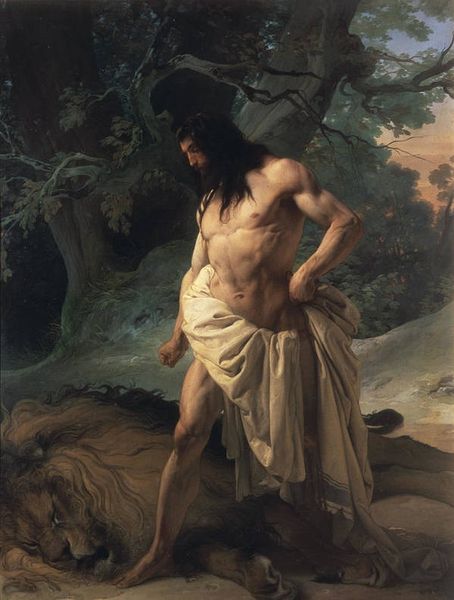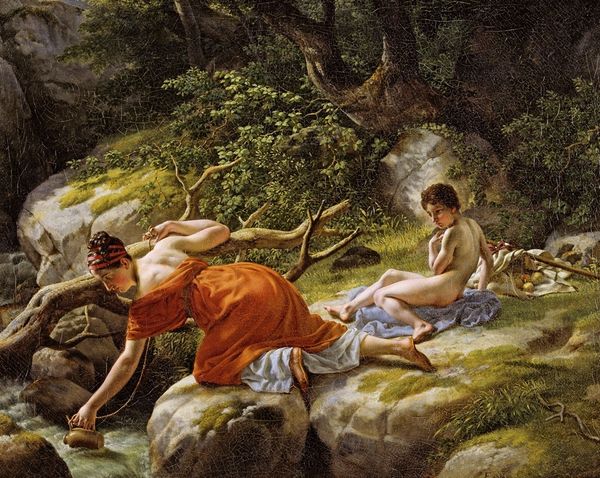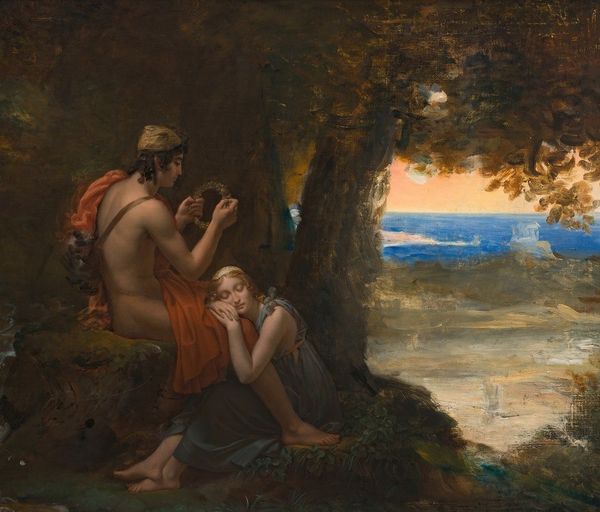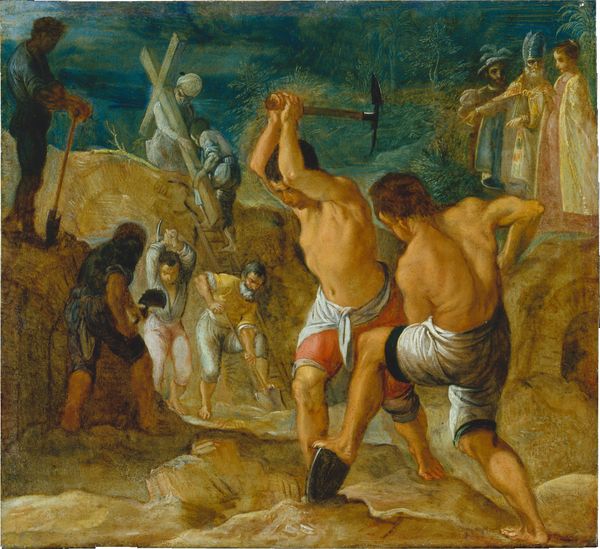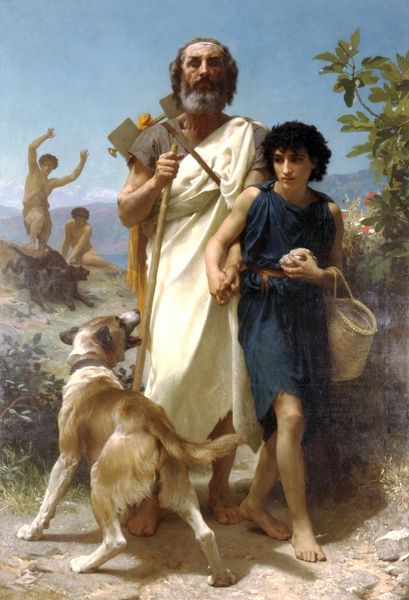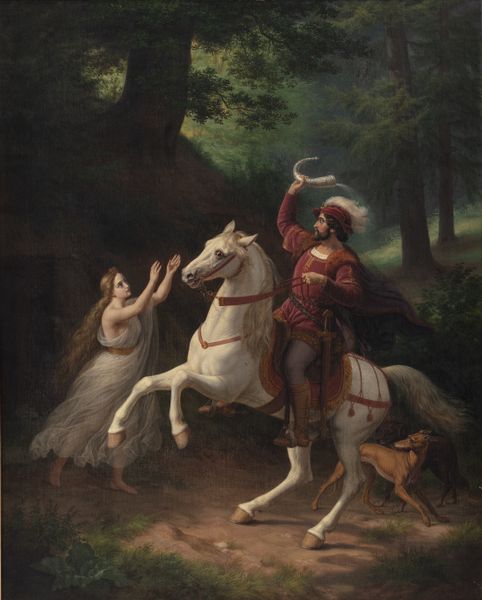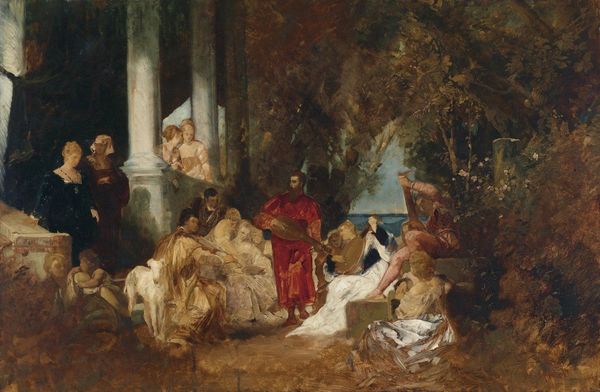
oil-paint
#
narrative-art
#
fantasy art
#
oil-paint
#
landscape
#
figuration
#
romanticism
#
mythology
#
history-painting
Copyright: Public domain
Editor: So, here we have Joseph Binder’s "The Conversion of Saint Eustace," created in 1849 with oil paints. The painting depicts a hunter encountering a stag with a crucifix between its antlers. It feels intensely romantic and staged to me. What catches your eye about this piece? Curator: I'm drawn to the materiality of this work. Binder meticulously crafted a landscape using oil paints, and I wonder what drove his choices of pigments. The lushness of the green, the precise rendering of the figure’s drapery - these reflect particular economic and cultural values linked to access to materials, don't you think? What might this say about Binder's audience? Editor: That's a good point. The vibrant colours certainly would have appealed to wealthier patrons. I hadn’t considered the economic factors behind such artistic choices. It does speak to a level of privilege in both the creation and consumption of this kind of art. Curator: Precisely. And consider the labor involved. This wasn't just about individual inspiration. It's also about workshops, apprenticeships, the mining and processing of pigments, the weaving of canvas. Where did those elements come from and how would access to those elements impacted who and what could be represented? We see a narrative painting portraying a saint's conversion, but it's equally a document of 19th-century artistic production. Does that make you see it in a new light? Editor: Absolutely. Thinking about all the resources and labor involved really changes the way I understand its value – it's not just aesthetic, but deeply rooted in social and economic realities of the time. Curator: Exactly! It becomes a material record, not just an artistic expression. I might even want to investigate the kind of brushes he used…
Comments
No comments
Be the first to comment and join the conversation on the ultimate creative platform.
